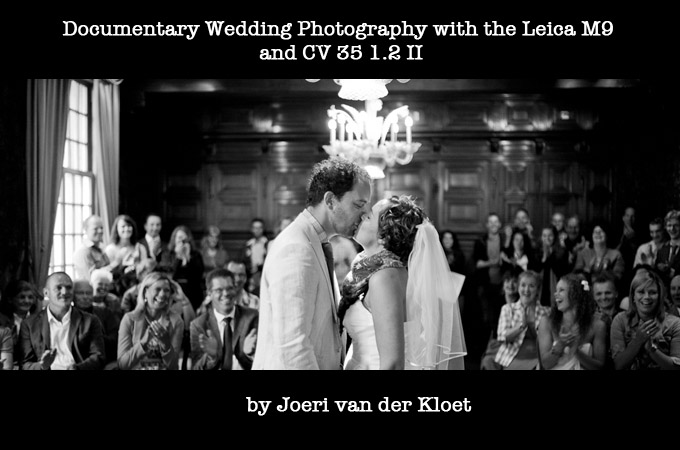
Documentary wedding photography with the CV 35/1.2 II by Joeri van der Kloet
Hi Steve,
Thanks for giving me the opportunity to contribute something to your site! Many of the things I use every day were bought after reading reviews on your site. (from Steve: Thank YOU for reading and stopping by here)!
I’m a wedding and documentary photographer from the Netherlands and I shoot as much as I can in a documentary style. That means I won’t give any directions to the wedding couples I work for. I’m just there to capture whatever happens. The funny thing is that couples will hug, smile and kiss on a wedding, so there is no need to give directions how and when they should do this. The trick is to be there and be ready. As far as I’m concerned, this approach delivers true images and couples always say to me they really relive the day as they’re watching the pictures. For me, it makes my work one of the most rewarding disciplines of photography. I can really do what I like the most: observe and capture. I always say: the best training for documentary wedding photography is street photography. If you can do streets, you can do weddings.
[ad#EMBED]
I always liked to keep my equipment as basic as possible for documentary work: no zoom lenses, no flash, just fast primes and a couple of 5D2’s. One and a half year ago I switched to the Leica M9, after having played with a secondhand M6 for just a week. I totally fell in love with the simplicity of the camera and I figured it would be a great tool for my documentary wedding style. I practised for a number of weeks before I took it to my first wedding. The focusing was of course the hardest part. On the 5D2 I always worked in manual mode, so that did not change with the M9. For my first wedding I was pretty nervous, but the result was good. I didn’t miss a single shot and I loved the images.
I started with a simple kit: a 35 and 50 summicron and – an old, but very sharp – 90 tele-elmarit. I loved the simplicity of working with this kit and the look those summicrons gave me, in combination with the sensor, was a lot more pleasing than what I was used to. With the 5D2’s I mostly worked with two bodies and had a wide-angle attached to the first and a 50 to the second. Working with just one camera gave me some peace of mind and I liked that.
After a while I decided to buy the Voigtländer Nokton 35/1.2 II. At first, I bought this lens as some kind of ‘in case of emergency lens’. The M9 can be used up to 1600 ISO, only with very proper exposure, so that is about three stops slower than the 5D2 I used to work with – I’m counting 12800 in for the 5D2, though it gives much less detail than the M9 does at 1600 –
Buying a Noctilux was out of the question, so I turned to the new Voigtländer Nokton 35/1.2. It had good reviews and I was lucky enough to find one that focused perfectly on my M9. More importantly, low-light situations on weddings are generally also situations where you need a lens that is not too tight. For example, most brides get into their dresses in a slightly dim room. They don’t want their neighbours to spot them in their underwear of course. The first meeting between bride and groom is also quite often in a rather dark place: on the stairs, or in a hallway: both situations where a 50 would be too tight.
A fast 35 also makes a very versatile lens. You can use it for portraits, because the subject can easily be isolated. You can stop it down and get everything from the foreground to the background perfectly sharp. Moreover: it gives a very natural and ‘honest’ perspective. I can see why the Canon 35/1.4 is so popular. It is a very usable and interesting focal length and the 1.4 aperture only adds to this.
I have to say: the Nokton is quite heavy, but feels very good. Even better, it doesn’t block too much of the viewfinder, even with the hood on. The focus ring is smooth, but stiff enough. The aperture ring feels more solid than my summicrons and the sound of the clicks is lovely. I know, this doesn’t have any effect on the photo’s, but I think a lens should give you the idea you can rely on it. And this one does.
On the M9 and M8 it is a little heavy, but the balance is still good. If I use it a lot during the day, I really feel the difference with the 35 cron, but you could solve that with the grip that can be fitted on the M9. When used on the M8, a UV/IR filter should be fitted to prevent black colours turning into purple.
The Nokton 35/1.2 is quite sharp, even wide open. Sure, it isn’t summilux sharpness, nor summicron sharpness, but when used properly, sharpness is pretty good. Using it wide open requires precise focusing and makes it hard to recompose afterwards when the subject is rather close. Portraits taken on 1.2 should therefore have the eyes somewhere in the middle of the frame, or you should take into account that recomposing alters the focus a little. For me, it works perfectly. Sharpness is good in the center, but in the corners, it is a lot softer. Stopped down, center sharpness and corner sharpness improve.
For me, sharpness is good enough and I almost never stop it down further than 1.4, because I love the way the lens renders wide open. Also, I bought it to use it on 1.2, so why stopping down? Whereas in portraits sharpness is critical, in my documentary work, sharpness is less important than being able to get the shot and create a mood, look and style that suits me and the one that pays me.
Talking about its look, I just love it. The Nokton images show a dreamy, romantic rendering, with a beautiful soft background and plenty of sharpness in the center. The mild vignetting only adds to the mood: it makes the subject shine even more. Great for wedding work!
I bought the Nokton for situations where light would be so dim, my summicrons couldn’t do the job. After a few months of use I can say that the Nokton does its job very well and it has become more than a emergency lens. If you want razor thin depth of field- although you can’t compare to the 50/1.1 as far as DOF goes – creamy bokeh, dreamy moods and little vignetting, the Nokton is your lens. As a bonus it does not focus shift, is built very well, is cheap – Leica cheap, not really cheap – and has good sharpness.
However, for walking on the streets an entire day, I would prefer the 35 summicron, because of its weight, dimensions, better corner to corner sharpness, better hood, higher micro-contrast and the fact that it can be used in combination with my 50 cron and be processed similarly with the 35 cron files.
I haven’t stopped using the Nokton for weddings only. I have been using it for other documentary work where I wanted that specific look, but I also used it for portraits and street photography. The picture of the bike for example, was shot in the middle of the night, with just a bit of weak light coming from street lightning. It was shot on 1/15th at 640 iso, wide open at 1.2. Good sharpness and lots of mood and nice bokeh. Whereas the M9 is not regarded as the number one nightphotography camera, the Nokton might change things a bit. Heck, it even makes my M8 suitable for night photography!
Using a rangefinder for wedding photography is not a very common thing I have noticed. Sometimes people ask me whether I’m going to use that ‘point and shoot’ all day… Some older people know Leica from the old days and they all know how expensive it used to be. If I tell them what a M9 costs these days, they usually don’t believe me. The good thing however is that I get a lot less attention than when I was walking around with two big camera’s. I can get closer to people without being noticed and during ceremonies I appreciate the silence of the camera. For me, a rangefinder makes my work a bit more fun and that, I think, is very important.
You can see more of my work on my dutch website www.luta.nl

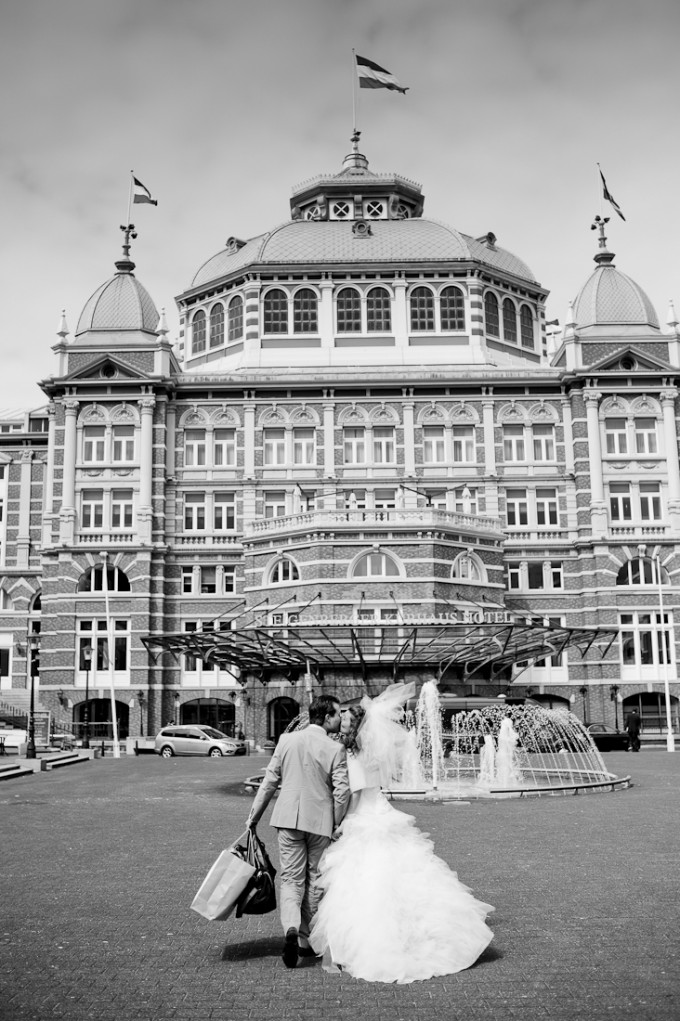
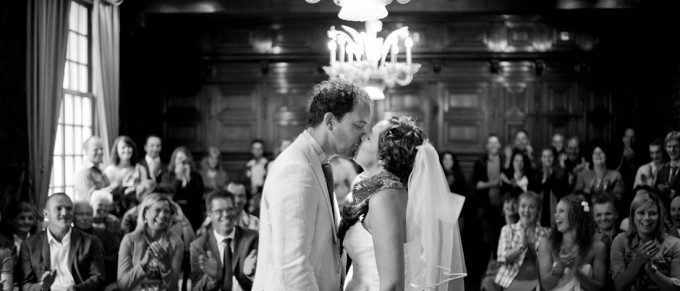
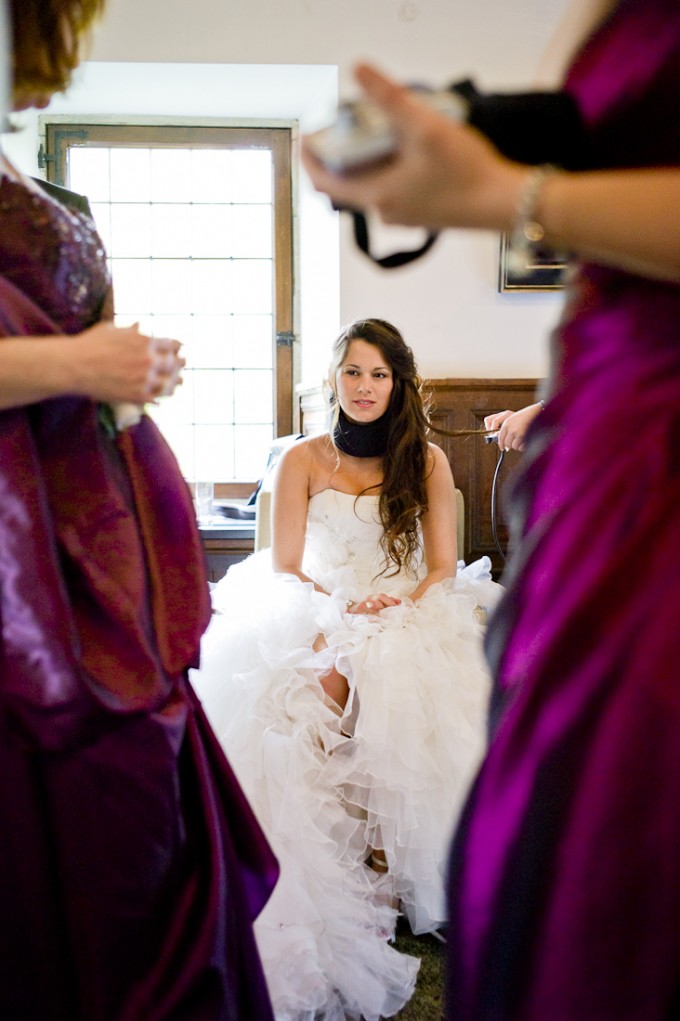
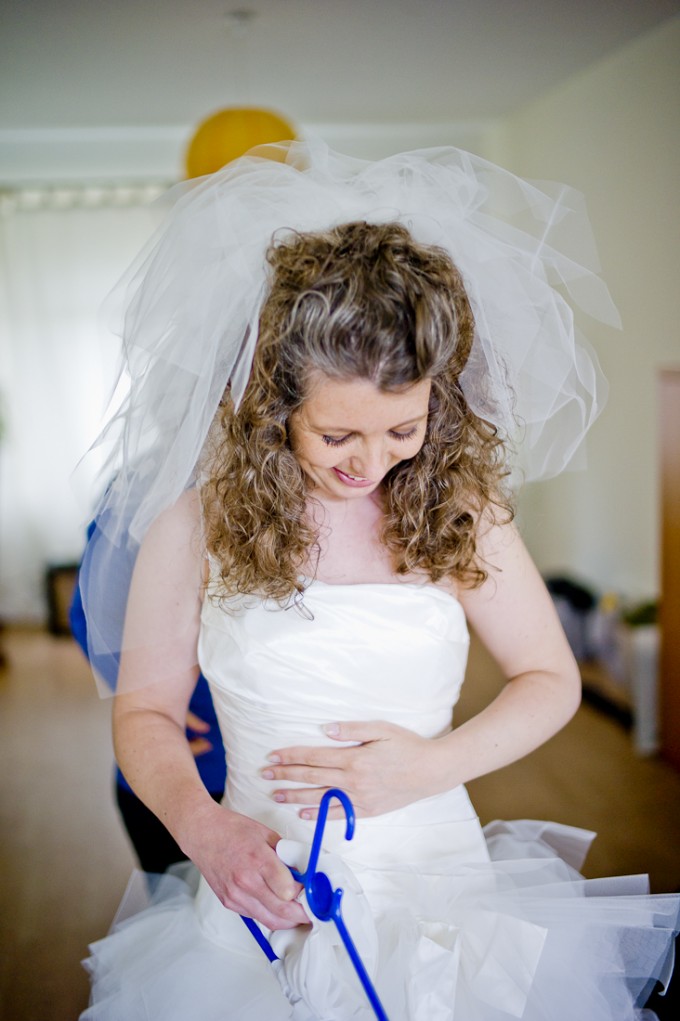
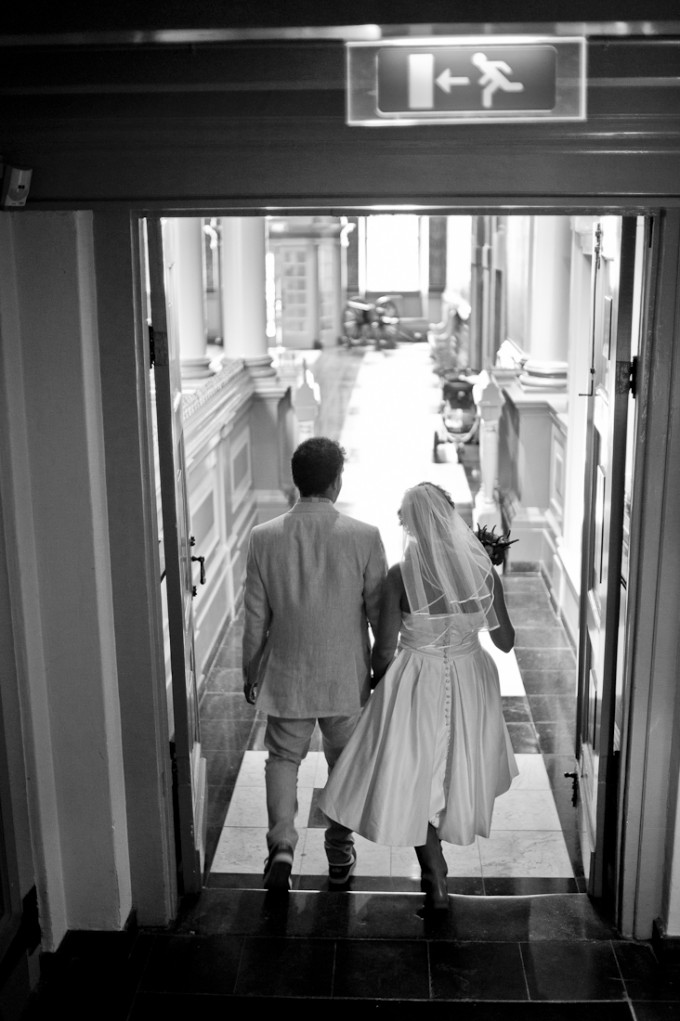



Anyone interested in my complete story might want to watch this clip: http://www.youtube.com/watch?v=nngi39YAFL0
Thanks everybody!
Great!
Nice to see a few documentary wedding images here, maybe I will write an article on the X-Pro 1 for documentary wedding photography as I love that camera even though Steve wasn’t too keen on it. A lot of my work is in very low light so I need to have clean images at high iso, not sure how the Leica M9 would cope with that.
Hi: I shoot corporate and about 25 weddings/year. Purchased my first M9, with the 75 2.5 and 35 1.4 asph, along with a zeiss 21 2.8 in March. Currently the M system comprises about 30% of my total wedding-day imagery. The majority of images I shoot are still with the DSMKIII w/the 24-105L, and the 7D with the 70-200F4-L. I much prefer the look of the Leica but still need at times a real long lens and flash for some of the situations. I have had NO trouble working 3 different file types (I shoot raw only) processing in Lightroom. As long as the Leica exposures are on, the file quality is equal to the MKIII at anything at or below 800iso. Also find the M9 to be as fast to react to a situation (focusing and exposure) as the DSLR’s. When Leica releases the M10 (maybe?), and if I can afford it, that’ll be my second body and the DSLR’s will consume less in my total image count.
Great article as I mentioned before. At what point did you decide to use the M9 exclusive at weddings and what was the reason? Here is a write up of my feeble attempt at the transition.
http://www.alexonlocation.com/2012/06/20/shooting-weddings-leica-m9/
Well, as soon as I felt sure enough to use it. That was after a few weeks I bought it. The first wedding I also took my 5D2, but never fired a single shot with it. The reason for the switch was my shooting style: inconspicuous, available, documentary shooting. I felt it could be done with even less material than I was already using. Smaller, quieter, all things that I liked about the RF.
About size and clients: well, as you can see on my site, I’m not trying to hide what camera I use. When clients come over to meet me, I’ll show them the camera and explain why it works for me. Of course, during a wedding, people will ask questions about the compact, but I can explain what it is. After they’ve seen the photo’s, they’ll know what I mean.
Of course you have to decide for yourself, but I don’t see the point of using a RF with strobes set up and shooting hyperfocally on a wedding. The beauty of the RF lies in shooting wide open and being invisible. I would never ever want to flash on a wedding, and even more during the ceremony. If I’d were to use flash, I’d get my 5D2. If you’re uncertain about focussing, just train, train and train some more.
very romantic and vintage style wedding photography! The feeling is different from what i normally see.
Thanks! Actually, that’s what most of my customers tell me as well. I really don’t like al those staged images which are still most common.
Beautiful work – just spent about 30 minutes looking through your website and your great images – had to use Google Translate on your blog too, which always comes out funny for English translations.
The more I read Steve’s site and the likes of ShootTokyo.com and others, I am so close to getting my first Leica. I think I’ll try to go for a second hand M8 which I can afford if I sell my Ricoh GXR M-Mount. Prior to downsizing I owned a 5D MkII with all the heavy L lenses but it just gets too much after a while and I think the Leica will give me the quality and image I am looking for in a lighter package.
Thanks again for your wonderful images.
Thanks Jason! Just be aware that switching from a 5d2 to a M8 might be tricky if you don’t have fast lenses. Under normal circumstances a summicron will be sufficient, but as soon as there’s not that much light, you need a faster lens. The CV 40/1.4 might be a good one!
I loved this article, the way you shoot without flash and more stuff!
And I love this site Steve!
I would like to hear how the pros do speedy focusing in wedding event. I found shooting with the Leica difficult because I need to focus in the patch in the viewfinder and recompose. All that needs to happen in a split second. It might not be an issue when using range focus. But shooting with bigger aperture that the DOF is shallow, I found that challenging.
hi Sam,
I force myself to practise on a very regular basis. What I do is act like I’m on a wedding and I focus on various objects in my kitchen, garden, on the streets. After I ‘shot’ the subject I’ll remember the aprox. distance to the subject, so for the next subject I’ll throw the focus in the right direction instantly. Focussing back and forwards takes the biggest part of focussing with the RF, so if you can avoid that, you’ll gain lots of time. Secondly, you’ll find it easier to get a precise focus very fast with more training. For example, in the beginning you’re searching for a straight line to focus on, whereas with experience you don’t even need to think about that.
Third, a lot of action is anticipation. For example I suspect that something interesting will happen there and there and I’ll prefocus and wait for the right moment. Recomposing by the way, can be done in a fraction of a split second. I never miss a moment because of the manual focus. I miss moments because I’m not at the right place at the right time. Of course, these are never crucial moments, because I’ll always play safe with these. Missing moments is not bad by the way: it means you actually have seen the moment and that’s what makes you a good photographer.
For the receptions that I strobe or instances with a lot of light, I just use hyperfocal and don’t bother with focusing. As long as I keep my subjects within a band of 6ft to infinity, the images are sharp enough.
I used the M9 as a second body for the last 4 weddings I’ve done. I placed a 70-200/2.8 on my Canon EOS 1d Mark IV then switched between the 35 cron and the 75 lux on the M9. The kit was amazingly light and it was wonderful to shoot the M9 for all the reasons you mentioned. If I could afford another M9, I would should that exclusively.
I’ve used my 5d2 only once as a second body with the M9. I didn’t like the way it worked, during shooting with two totally different camera’s, but also during editing. It took a lot of time to get the images from both camera’s the way I wanted. You cannot just copy/paste your settings, even WB is totally different.
If you like working with the M9, get a M8 as backup and leave your 1DIV at home. Makes your bag a lot lighter.
Thanks. That is a great suggestion. I’ve already thought about that, but not sure I want to go for an M8 as I am almost there for another M9.
Hi Joeri, I really like your approach of shooting in a documentary style!! Very special and inspiring! I would say that this will be the extra cherry on a already beautiful and special day. Upon seeing these images I sort of get sense to get married myself:-).
Your website also contains some wonderful photos and maybe I will use one of your tips someday;-)
Thanks for sharing!
You’re welcome and thanks for your kind words!
My pleasure!
Great pictures and cudos for daring to shoot a wedding with just one camera!
I had the Nokton on my M8 but recently traded it up (or rather had to trade it up) for a Summilux 50 ASPH. I really loved the rendering of the Nokton and loved the low-light ability it gave to the M8, but the Summilux does – to my mind – beat it both in picture quality and even more lovely rendering (very subjective, I know) – but most importantly in terms of handling. While the Nokton was extremely well constructed – a bit of a contrast to some other earlier VC lenses I own(ed) – I felt it was just too front-heavy on my M8. The camera would always hang “nose-down” when put on a neckstrap and my hands tired much faster than with any other lens I owned. Although I must admit I am very tempted to buy it again in the future when my budget allows for it – maybe once I get an M9 (after an M10 brings down prices for mere mortals like me) to replicate my beloved VC 28mm 1.9 which now acts as my 35mm-equivalent.
Thanks!
For the record, the M8 is my backup and during a wedding I always carry it with me. Even Leica’s can brake down and the wedding will go on… Leica or not…
Joeri, Hey very similar goings on here w/me as well . As a successful 30+ year photog ( shooting 70% weddings , Canon-Hasselblad-Nikon ) I too picked up an M9 & entered a whole new ( or actually re-visited) way of shooting again .
I now own the M9p + four different lenses , in the last year year of so I have been shooting more & more of my work with the Leica ( this has been a very slow process) & I am enjoying it tremendously , my sense of concentration & framing & speed have all improved along with my creativity.
AS much as I like my Nikon’s . . .I love my Leica.
I so much enjoyed your work & post.
JM E upstate NY .
Thanks for your kind words!
Imaginative? Like the person said above, the bride and groom are going to want that shot in their book. It looked great, especially considering he’s not directing or posing any of the couples.
Great job!!
I have the same combination. I have had the previous generation 35/1.4 (loved it), the previous generation noctilux (great look but not that sharp wide open), had the 28 2.0 and latest 50 1.4, but i liked the look of that 35 1.2 II so much, i sold everything else (and got good money for it), so i am a new convert to voigtlander. i just bought the 75 1.8 voigt, but haven’t taken it thru the paces yet.
i disagree when they say “why spend the money on a leica cameras if you are not going to use leica glass”, because the camera on it’s own it’s pretty special, even with other manufacturer’s glass. i am buying voigtlander lenses and saving the difference to get the monochrome.
Lenny – if you are referring to Leica M2-M7, I might have to disagree. Sure the cameras have a storied past and they feel great in your hands…I love the M3 and felt great shooting it…but not for any type of reportage or weddings!!
Way too slow to load film…end of story. You can literally load a roll of 36 into many RF’s or SLR’s and shoot 5-10 legit frames while still trying to load film in a Leica.
I would love Leica glass in an M-mount combo long before I would use a Leica body to cover a wedding as the primary shooter – after all, finder issues aside, good and bad, it’s just a light tight box with a couple of settings.
A Contax G2 with the 28 and 45 could just kick 75% of a wedding for me…no metering issues, awesome optics, letting someone do what they need to without the camera getting in the way…if you were shooting film that is…the M9, of course is another story..:)
Very inspiring… Love the last pic where the “emergency door” sign on the door gives you something to think about and smile – the man choose to enter the room with his bride to their happy marriage life and ignore the emergency exit door without hesitate 🙂
I deliberately took the picture for that reason…
No just kidding. Nice thought though.
That’s my favorite, too. Joyful newlyweds striding out into the brilliance of a new life. With an emergency exit sign pointing the way. Both touching and gently funny. Such a perfect mood for a wedding, and much better than the stiff solemnity most traditional wedding shooters impose on all their subjects. I’m also impressed that you captured so many well composed, technically expert shot on the run. Just getting acceptably correct focus with that equipment would have been more than I could manage. Or is that why wedding gowns are so fluffy and have trains — slows the bride down so the photographer can keep up while juggling gear. This is one of the more inspirational articles I’ve seen here. Thank you very much. And thanks, Steve, for consistently providing me with entertaining, instructive, and inspiring articles unlike I see anywhere else.
hi Mark, thanks a lot! No, that’s not the reason why wedding gowns are -sometimes- puffy. I do use the neckline however very often for focussing, as long as they are away far enough. The neckline is one of the easiest thing to focus on while the couple is walking. As soon as they get closer you have to go for the eyes.
Inspiring work, thanks for sharing.
I’m not so sure how much of wedding photography is supposed to be “imaginative”. Sure, it’s great to have those unconventional shots but the first photo here is exactly what the bride and groom expect from their photographer. Job well done.
Finally – someone who can rock a 3 lens kit! For me, it would be 35, 50, & 85, but close enough.
I have the 35 f/1.2 CV and I used it so much I sold my 50mm LUX ASPH. I don’t miss the 50mm one bit…well maybe a little but I sure do enjoy the extra $3000!
Thanks for sharing nice work you captured some really nice moments
Nice shots (the first one is a bit unimaginitve though).
As it happens, I was married in the Kurhaus as well, just a few weeks ago. Our wedding photographer produced the same type of images (great), and used a 5d mkII.
Just goes to show it’s not the equipment, it’s the photographer.
It’s both. Equipment plus photographer.
@ Michiel: my approach or philosophy didn’t change that much with switching to a RF. I just feel it is easier for me to get close without altering reality with the RF. Also, the rendering and look of the lenses IS different, but that is not visible in each picture.
Most important though is the fact that I did NOT ask the couple to walk to the Kurhaus and I also did NOT alk them to kiss. It just happened and I was there. For the final picture that fact really matters to the client, because the moment I captures was real and not staged. That however, can also be done with a 5D2… in fact, I never did it in another way.
@Joeri: Excellent approach, and the Kurhaus is a very special location, as I remember well… 🙂
Hi Joeri,
Nice reflex of your professional equipment transformation.
Not only pro’s like you made that move….M9, 50/1.4 and CV 35/1.2 … my way the last year as well
I love the CV35 especially for Black&White… Bokeh is different from leica, but that give it it’s identity
Thanks for sharing your experience
thanks Hans! I’ve been watching you on Facebook quite a while and I know you’re using a the M as well. And a lot of lenses right?
Very nice work and an interesting discussion of the lens! This type of practical discussion of photo gear at work is very useful.
Thanks for this. I actually sold my summicron 35 when I bought this lens as I found that the Nokton when stopped to be as sharp across the frame with amazing micro detail. I also found it to be as sharp as the 35 cron at f2. It is quite soft at f1.2 but even improves slightly at f1.4
The same thought crossed my mind, but when working in series I like the fact that the 35 and 50 cron can be used very good simultaneously.
Love your work… beautifully capturing the moment…
Great post and awesome pictures Joeri! I’ve made a documentary style weddingshoot with my M for a friend as well and your approach to this kind of photography totally resonates with me. Goed gedaan hoor en veel succes! 😉
Thanks! Have fun with your M8! I use mine a lot with the 35 cron and it shines!
Pwoaaah. These are beautiful photographs. Totally inspired. Absolutely enjoyed the read and the share. Thank you to both you and steve for sharing. I am gonna take my rangefinder out for some doco work!!
beautiful stuff! Cheers to using a rangefinder for wedding work!